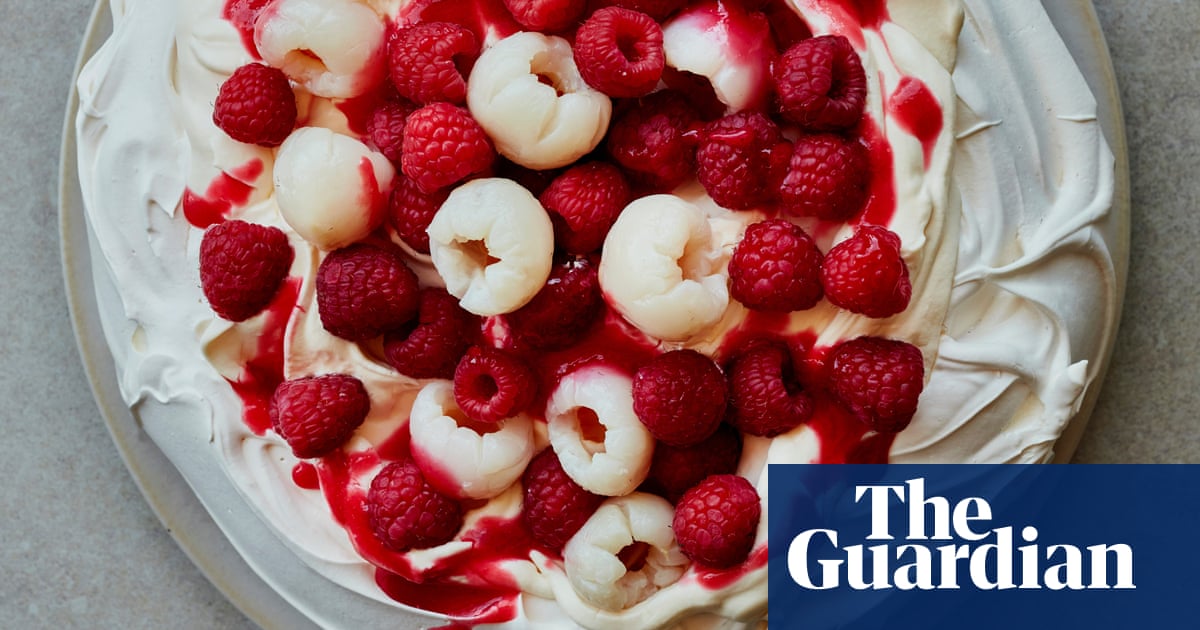Inspired byPierre Hermé’s iconic ispahan macarons, where rose, lychee and raspberry create an exquisite flavour combination, this dessert reinterprets the trio in a crisp and marshmallowy pavlova. Instead of rose, I’ve used elderflower to infuse the cream, gently bringing together the delicate sweetness of lychee and the tart brightness of raspberries. Garnish with fresh elderflowers (if you can find any) and some coulis for a beautiful centrepiece.
Prep5 minCook2 hr 30 minCool2 hrServes8-10
For the meringue250g egg whites(from 6-7 large eggs)½ tsp cream of tartar400g caster sugar2 tsp vanilla extract1 tsp white vinegar2 tsp cornflourFine sea salt
For the cream filling400ml double cream100g mascarpone2 tbsp elderflower cordial2 tbsp icing sugarFor the fruit topping565g tin lychees(250g drained weight)350g fresh raspberriesFresh elderflowers, to decorate (optional)
Using the base of a roughly 23cm cake tin or plate, trace a circle with a marker pen on a sheet of baking paper, then put the sheet ink-side down on a large baking tray.
Heat the oven to 150C (130C fan)/300F/gas 2 and put an oven rack in the bottom third of the oven.
Put the egg whites in the bowl of an electric mixer, and beat with the whisk attachment on medium-high for about a minute, until foamy. Add the cream of tartar and carry on whisking to soft peaks. Add the sugar a tablespoon at a time, whisking all the while, then beat for about five minutes, until the mix is thick and glossy. Turn down the speed to low, add the vanilla, vinegar, cornflour and a pinch of salt, and beat for another minute or two to incorporate.
Dab a little meringue under each corner of the baking paper, so it sticks to the tray, then spoon the rest of the mixture into the centre of the traced circle. Using a small spatula, spread the meringue to the size of the circle, shaping it into a round with a slight dip in the centre. Transfer the tray to the oven and immediately lower the temperature to 120C (100C fan)/250F/gas ½. Bake for two hours, then switch off the oven and, with the door slightly ajar, leave the meringue inside for about two hours, until completely cool.
When you’re ready to serve, put all the ingredients for the cream filling in the bowl of an electric mixer, and beat with the whisk attachment on medium-low for about a minute. Turn up the speed to medium and beat for another minute or two, until the cream makes smooth waves.
To assemble, carefully transfer the meringue to a serving platter, then spoon the cream into the centre and spread it right to the edges. Top with the lychees and raspberries, some coulis if you like,and place a few elderflowers all over, if you managed to find some.
